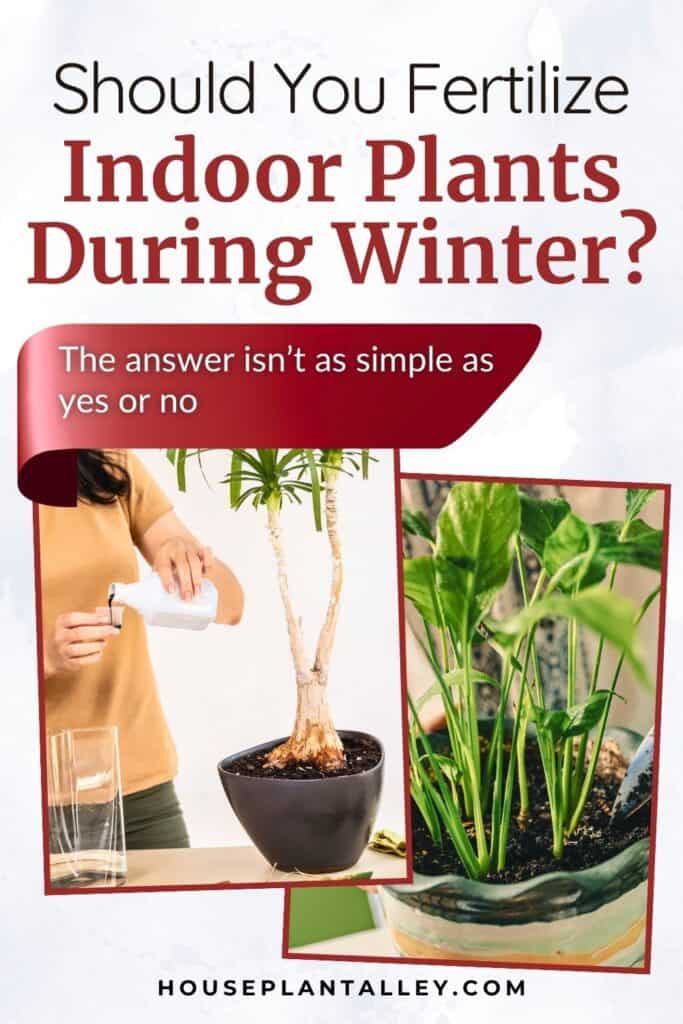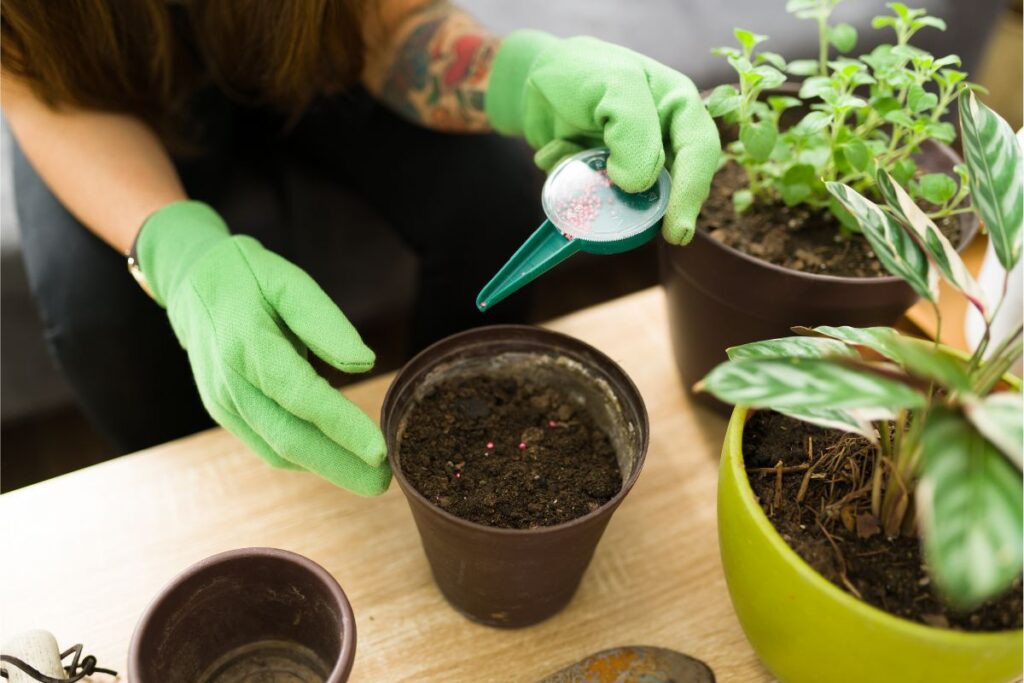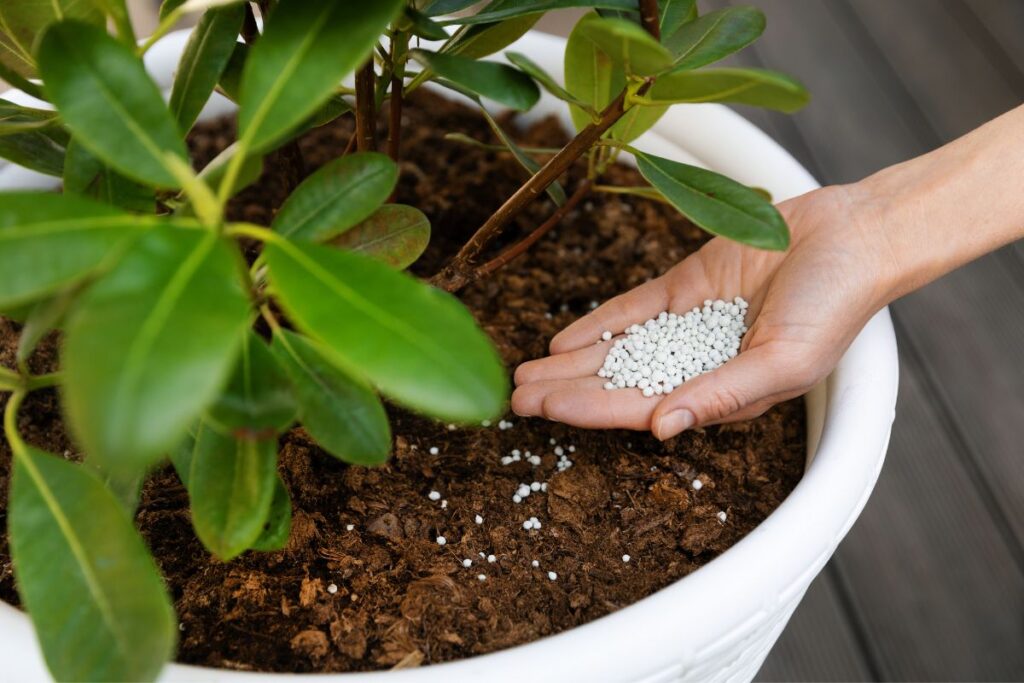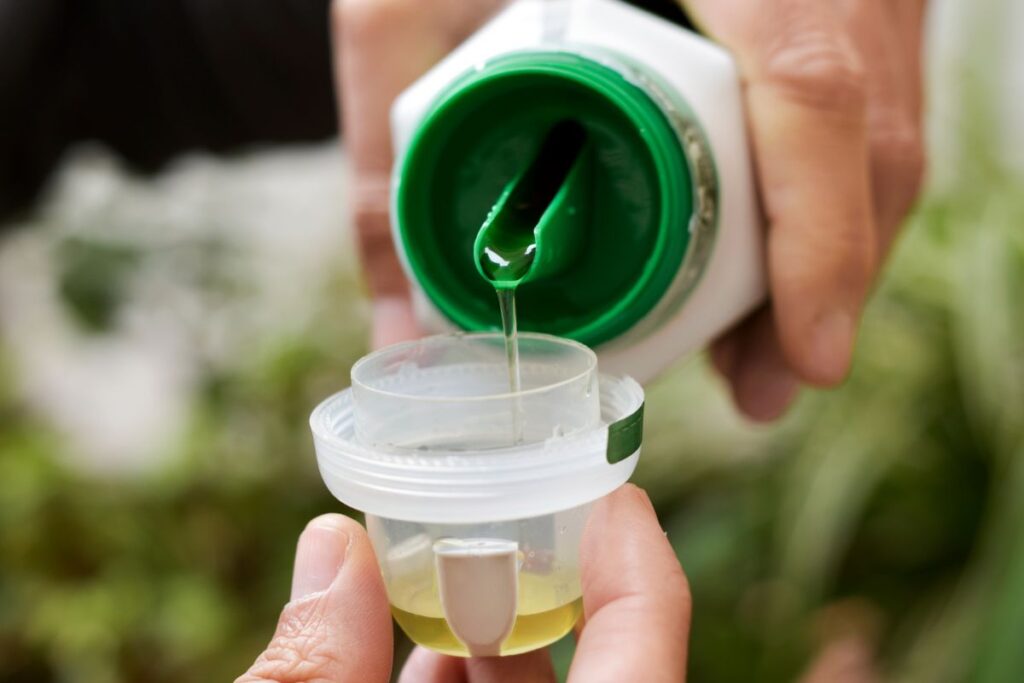Taking care of indoor plants in the winter can be tricky. On one hand, you want to make sure your plants are healthy and thriving, but on the other hand, fertilizing them during this time is a big question mark. Fertilizing indoor plants in winter: yay or nay? Let’s explore what works best for your beloved green friends!
As an avid plant parent myself, I know how important it is to give my little leafy babies everything they need—especially when temperatures drop outside. It can be hard to decide whether or not you should add fertilizer into their routine when things get chilly indoors as well. So let’s dive into the pros and cons so that we can figure out if giving our houseplants extra nutrients will help them thrive during these colder months!
Whether you’re just starting out with caring for houseplants or have been doing it for years, understanding when and how much to feed your plants is key. Knowing which type of fertilizer (and how often) to use will ensure that your lush interior oasis remains healthy all year round. In this article, we’ll take a look at some tips and tricks so you can answer the age-old question: Is fertilizing indoor plants in winter really worth it?

Contents
Why Fertilizing Indoor Plants In Winter Is A Bad Idea
Fertilizing indoor plants in winter may sound like a good idea, but it’s actually not recommended. Over-fertilization of indoor plants during the colder months can cause them stress and harm their health. Winter fertilizer isn’t necessary because many indoor plants don’t need additional nutrients to survive over the cold season. In fact, they’re usually better off without extra nutrition while they’re dormant—too much fertilizer could even kill them!
The best way to care for your indoor plants during winter is to keep an eye on their water levels and make sure that you don’t overwater them. If your house tends to be dry due to central heating or other factors, you might want to look into using a humidifier. This will help ensure that your plant stays healthy until warmer weather arrives.
It’s also important to remember that different types of plants require different amounts of light and warmth throughout the year. Knowing how much sunlight each type needs helps prevent any potential problems with over-fertilizing or under-watering indoors during wintertime.
When looking after our beloved indoor plants in winter, it’s essential we stick to basic maintenance such as providing enough light and keeping adequate moisture levels, rather than adding unnecessary fertilizers which could potentially do more harm than good!
Why You Should Fertilize Indoor Plants In Winter

I’m sure you’ve heard it before: fertilizing your indoor plants in winter is a no-no. But there are times when you should go ahead and give them the nutrients they need to survive the cold months. Here’s what I recommend:
First, identify whether or not your plant needs fertilizer during the winter season. If it does, then proceed with caution—as too much fertilizer can cause damage or even kill your plant. Keep an eye on how quickly your plant grows and adjust accordingly if needed. You may have to reduce the amount of fertilizer given each month or stop using it altogether for certain plants.
Second, make sure that the type of fertilizer used is suitable for use in the winter months. Some types are designed specifically for this time of year, while others can be toxic to certain species of plants. Additionally, some fertilizers contain harsh chemicals that may harm delicate root systems in cooler climates where temperatures dip below freezing. Be sure to read all labels carefully before applying any kind of nutrient mix to your indoor plants!
Thirdly, consider natural alternatives such as composting or adding organic matter like coffee grounds directly into the soil around your plants’ roots instead of relying solely on synthetic ingredients found in store-bought products. This will help provide essential nutrition without overloading their systems with potentially damaging materials that could cause long-term issues down the road.
Finally, keep track of water levels throughout winter because overwatering can also lead to problems such as root rot and other fungal diseases. Make sure to monitor moisture content regularly so that you know exactly what level works best for each individual variety in order to ensure its health and longevity during these colder months!
Tips For Fertilizing Indoor Plants In Winter:
- Identify whether or not your plant needs fertilizer; adjust accordingly if needed
- Use a type of fertilizer suitable for winter months
- Consider natural alternatives like composting
How Often To Fertilize Indoor Plants In Winter?

Yay or nay? That’s the question when it comes to fertilizing indoor plants in winter. As a houseplant enthusiast, I know that proper care and maintenance of these beloved greens is essential for their health and growth—especially during colder months. So, what’s the best way to ensure your indoor plants are getting the nutrients they need without overfertilizing them?
The answer depends on the type of plant you have. Generally speaking, most indoor plants require less fertilizer in winter than they do in summer because they aren’t actively growing as much due to lower light levels and cooler temperatures. However, some types of plants may benefit from more frequent applications if needed. For example, some succulents tend to grow faster in the winter and may require additional fertilizer every one or two weeks compared to just once a month during other times of the year.
When it comes to how often you should be fertilizing your indoor plants in winter, there are a few tips to keep in mind: Start with small doses of fertilizer—like half-strength water-soluble formulas—rather than full strength; use an all-purpose balanced formula designed for houseplants; avoid products with high nitrogen content as this can cause excessive leaf growth at the expense of flowers; and never apply fertilizer directly onto leaves as this can cause damage or burning. Additionally, check out specific instructions on the packaging or talk to a gardening expert about any special requirements related to your particular species of plant.
Overall, providing your indoor plants with adequate nutrition is important throughout all seasons—even in winter! With careful consideration and regular monitoring, you will soon have thriving green life inside your home again!

Signs Of Over-Fertilization
Now that you know how often to fertilize indoor plants in winter, it’s important to be aware of the signs of over-fertilization. Too much fertilizer can have serious consequences for your plants and lead to nutrient imbalances which could affect their growth.
First, let’s discuss nitrogen burn. This is when a plant has been exposed to too much nitrogen and its leaves start to turn yellow or brown at the edges or tips. If this happens, reduce the amount of fertilizer you apply next time and make sure you water frequently so nutrients don’t build up in the soil.
Next are chlorosis leaves, which occur when there isn’t enough iron available for a plant to absorb into its system. Chlorosis looks like light green patches on dark green foliage and is a common sign of over-fertilization with an excess of phosphorus or potassium in the soil. To prevent this from happening, use balanced liquid fertilizers that contain all three macronutrients: nitrogen, phosphorous, and potassium (NPK).
Finally, white deposits may form around drainage holes if calcium levels in the soil become too high due to over-fertilizing. To avoid this problem, flush out excess nutrients by running water through potting mix several times throughout the year.
So remember—while fertilizing your indoor plants during winter is essential for promoting healthy growth, be careful not to give them too much! Keep track of how much fertilizer they’re getting each month and look out for any telltale signs of over-fertilization such as nitrogen burns, chlorosis leaves, or white deposits near drainage holes.
Conclusion
In conclusion, fertilizing indoor plants in winter can be a bad idea because they are generally not actively growing. In some cases, it might still make sense to continue to fertilize your indoor plants in the winter if you have particularly challenging soil or if your plant is a heavy feeder. However, when doing so, it’s important to understand how often and with what type of fertilizer you should be using in order to avoid over-fertilization—which can cause more harm than good.
Overall, I would recommend taking a conservative approach when deciding whether or not to fertilize your indoor plants during the winter months. If there’s any doubt about their needs, err on the side of caution and wait until springtime before making any decisions about feeding them. That way, you won’t risk harming your beloved houseplants and can ensure that they stay healthy all winter long!
